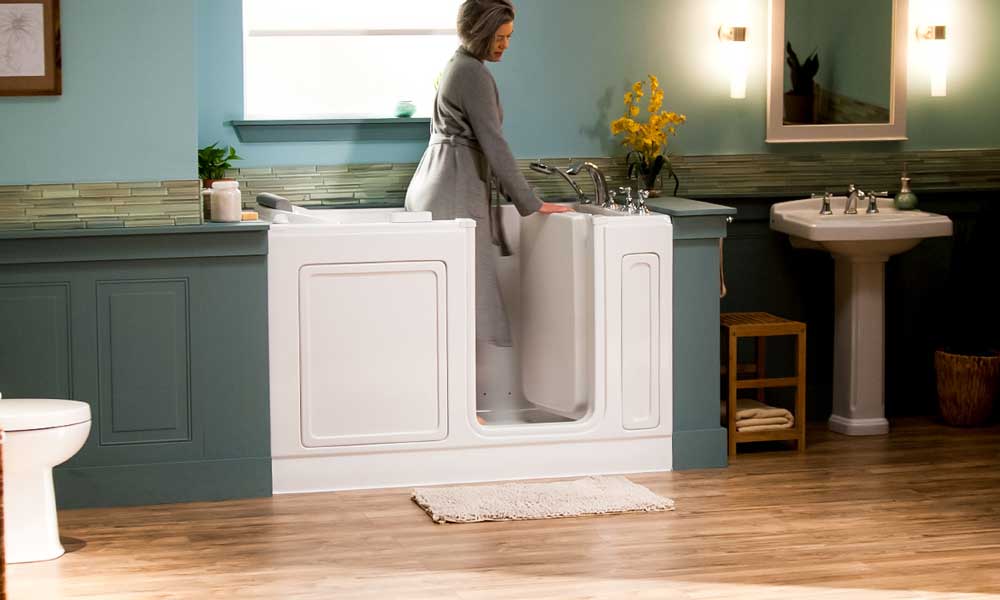A walk-in tub is a bathtub with a watertight door that allows the bather to step into the tub over a low threshold to increase safety while getting into the bath. The door closes, the tub fills with water and after draining the bath, the person opens the door and steps out safely.
While many models are taller than they are wide, there are many different models and configurations available to meet the needs of almost every customer and housing situation. For example, there are walk-in tubs available for easy transfer from a wheelchair to the tub seat; often called slide through tubs, nearly the entire front of the tub opens to give the necessary width.

Source: American Standard
Walk-in Tub Comfort
- Pro: Water Depth. Because there is no need to step over a tall wall, walk-in tubs provide a deeper water depth when compared to traditional tubs. A standard bathtub has a depth of 13 to 14 inches, while walk-in tubs can provide up to nearly four feet of water depth for a comfortable immersion experience while seated securely.Seats are generally placed at 17 inches high, leaving almost 20 inches of depth to immerse the torso, well within the average torso length of an adult. Many walk-in tub models also have hydrotherapy jets available and other luxury features such as chromotherapy lighting and heated seating.
- Con: Time to Fill and Drain. Because a walk-in tub has a door in the side of the tub itself, you cannot add or drain water while the door is open. This means you’ll spend a considerable amount of time sitting in the tub while waiting for it to fill as well as time waiting for it to drain before you can exit the tub.Some tubs can take as long as 15 minutes to fill or drain, although some high-end models have features to speed up this process. Even with rapid fill and rapid drain features, walk-in tubs can average around eight minutes to fill or drain, leaving a significant amount of time where much of the body is exposed to air and can become chilled. One possible way to reduce chilling is to purchase a model with a heated seat.
Walk-in Tub Safety
- Pro: Safety Features. Much of the remodeling suggested for aging in place revolves around safety, specifically preventing falls. Over one-third of adults over age 65 fall each year and over 80 percent of those falls are in the bathroom. Walk-in tubs generally provide an array of features designed to reduce falls. These often include built-in handrails, an ADA compliant overall design, anti-slip flooring, contoured built-in seating, and a low step height for entry.Some models also include wide doors designed to allow those in wheelchairs to transfer easily to the tub seat without assistance. Another safety feature, although not related to falls, is a scald prevention valve, designed to prevent hot water burns.
- Con: Temperature. Another concern with a walk-in tub is temperature. Since you must enter the tub before filling it, there is no chance to adjust the water and get it just right before exposing your body to the water. Also, because you must sit in the tub while it fills, it is very easy to become acclimatized to dangerous temperatures as the water slowly climbs. Because of this, it is important that any tub you consider be equipped with a scald prevention valve that is designed to prevent dangerously hot water from entering the tub. Even then, it could take some uncomfortable minutes to get the water temperature adjusted comfortably in the tub as it fills.
